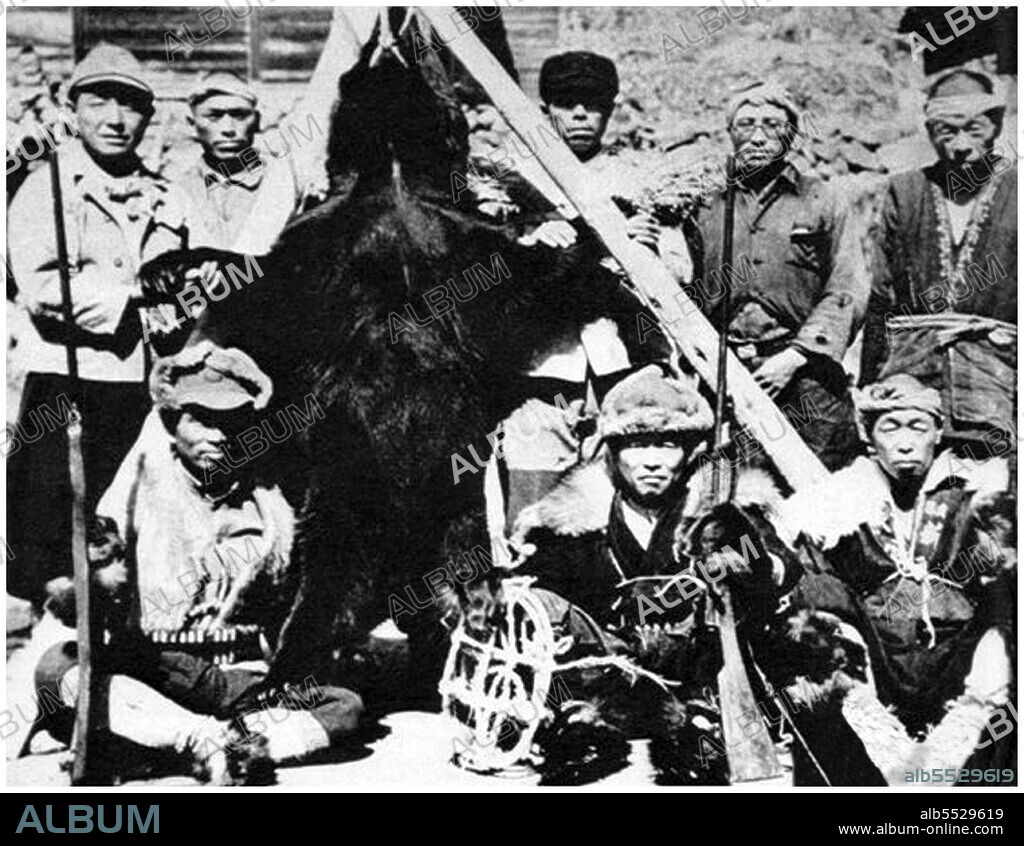alb5529619
Japan: A group of Matagi bear hunters from northern Honshu with their prey, c. 1940s

|
Añadir a otro lightbox |
|
Añadir a otro lightbox |



¿Ya tienes cuenta? Iniciar sesión
¿No tienes cuenta? Regístrate
Compra esta imagen.
Selecciona el uso:

Título:
Japan: A group of Matagi bear hunters from northern Honshu with their prey, c. 1940s
Descripción:
Ver traducción automática
The Matagi (Japanese: ??) are traditional winter hunters of the Tohoku region of northern Japan, most famously today in the Shirakami-Sanchi forest between Akita and Aomori. They hunt deer and bear, and their culture has much in common with the bear cult of the Ainu. They live in small hamlets of the mountain beech forests of Tohoku and engage in agriculture during the planting and harvest season. In the winter and early spring, they form hunting bands that spend weeks at a time in the forest. With the introduction of guns in the 20th century, the need for group hunting for bear has diminished, leading to a decline in Matagi culture. Matagi hamlets are found in the districts of Nishitsugaru and Nakatsugaru (Aomori), Kitaakita and Senboku (Akita), Waga (Iwate), Nishiokitama and Tsuruoka (Yamagata), Murakami and Nakauonuma (Niigata and Nagano). The Matagi are attested from the Medieval period, but continue to hunt today. They have come into conflict with environmentalists now that the forest has been partly cleared. They no longer hunt the serow, which is protected, but continue to hunt bear. Specialized Matagi hunting vocabulary contains Ainu words. Indeed, the word matagi itself may be Ainu, from matangi or matangitono 'man of winter, hunter.
Crédito:
Album / Pictures From History/Universal Images Group
Autorizaciones:
Tamaño imagen:
4859 x 3761 px | 52.3 MB
Tamaño impresión:
41.1 x 31.8 cm | 16.2 x 12.5 in (300 dpi)
Palabras clave:
AKITA • ARMA DE FUEGO • ARMA FUEGO • ARMA GRIEGA • ARMA LARGA • ARMA • ARMAS DE FUEGO • ARMAS • ASIA • ASIATICO • CAZADOR • FUSIL • HISTORIA • HISTORICO • HONSHÛ • JAPON • JAPONES • MOSQUETE • OSO • RIFLE • WEAPON


 Pinterest
Pinterest Twitter
Twitter Facebook
Facebook Copiar enlace
Copiar enlace Email
Email
